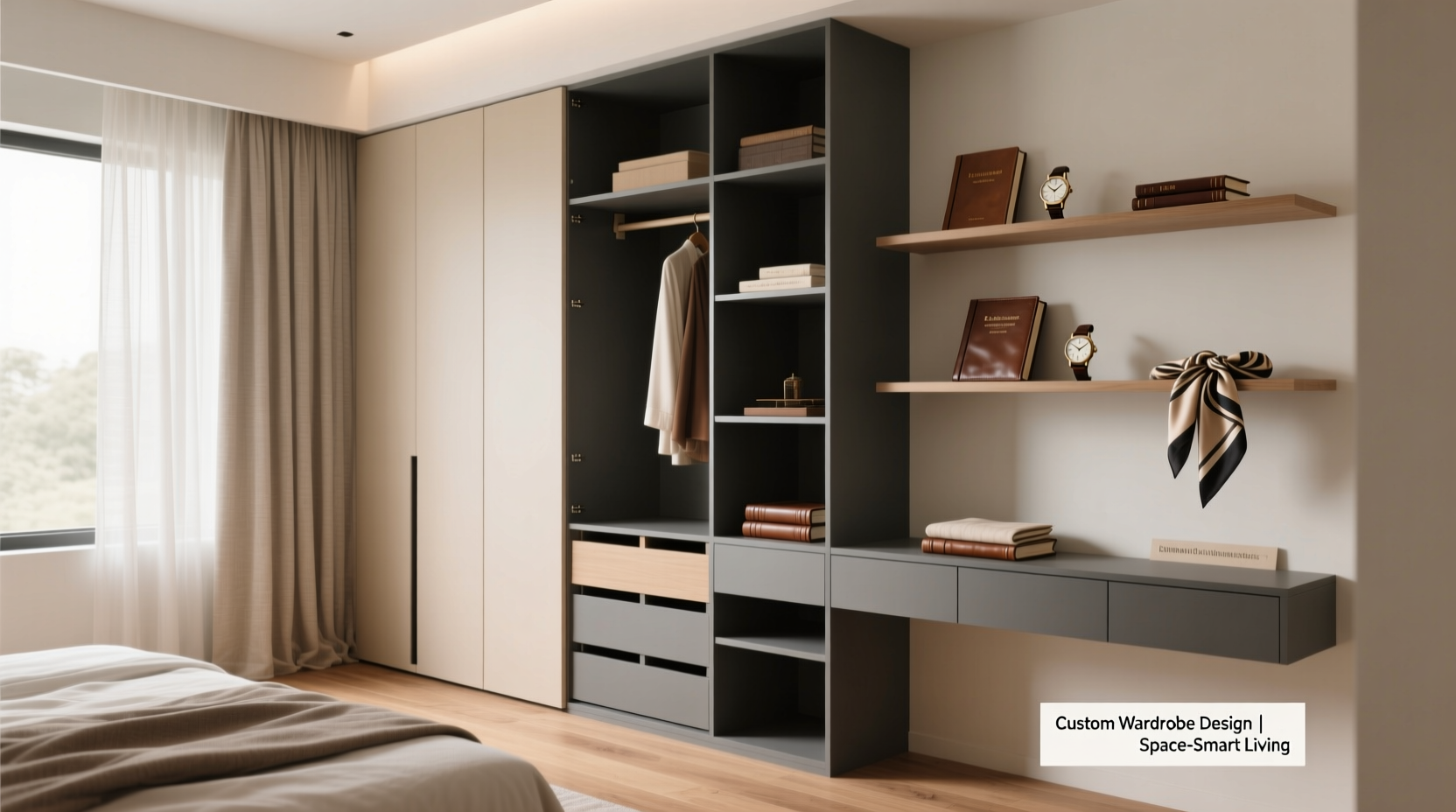A well-designed wardrobe should reflect both personal style and practical needs. Off-the-shelf solutions often fall short—either too narrow, too deep, or poorly laid out for how you actually use your clothes. A custom wardrobe, thoughtfully planned and built around your space, habits, and collection, transforms clutter into clarity. It’s not just about storage; it’s about creating a daily ritual that feels effortless and inspiring.
Assess Your Space and Storage Needs

The first step in designing a functional custom wardrobe is understanding the room you’re working with. Measure height, width, depth, and note architectural features like windows, doors, or sloped ceilings. These constraints aren’t limitations—they’re opportunities for creative design.
Equally important is evaluating what you own and how you use it. Do you wear suits frequently? Need extra shelf space for shoes? Prefer folded sweaters over hanging items? Mapping your clothing categories helps determine proportions: more hanging rods, deeper drawers, or pull-out accessory trays.
Step-by-Step Assessment Guide
- Measure the available space in inches or centimeters.
- Inventory your clothing and accessories by type and frequency of use.
- Identify pain points (e.g., wrinkled shirts, lost scarves).
- Determine desired features (lighting, mirrors, seating).
- Sketch a rough layout using graph paper or digital tools.
Design Principles for Maximum Functionality
A successful custom wardrobe balances aesthetics with usability. The goal is to make getting dressed intuitive, not a treasure hunt. Follow these core principles:
- Zoning: Divide the wardrobe into activity-based areas—everyday wear, formal attire, seasonal storage.
- Accessibility: Frequently used items should be at eye to hip level. Rarely used pieces can go higher or lower.
- Proportion: Allocate space based on real usage, not idealized habits. If you own 30 t-shirts and two dresses, don’t give them equal room.
- Lighting: Integrated LED strips or motion-sensor lights eliminate dark corners and enhance visibility.
“Custom wardrobes should serve the user, not the other way around. Design for how you live, not how a catalog photo looks.” — Lena Torres, Interior Organizer & Sustainable Living Consultant
Innovative Layout Ideas for Small and Awkward Spaces
Tight alcoves, attic eaves, or oddly shaped rooms don’t disqualify you from a great wardrobe. In fact, they invite ingenuity.
- Use pull-down hanging rods for high spaces.
- Install corner carousels or swing-out shelves to maximize awkward angles.
- Convert under-bed space into shallow drawer units for folded items.
- Add mirrored sliding doors to visually expand small rooms.
Essential Tools and Materials for Building Your Wardrobe
Whether you're hiring a carpenter or doing it yourself, knowing which materials and systems work best ensures durability and long-term satisfaction.
| Component | Recommended Material | Why It Works |
|---|---|---|
| Shelving | Plywood with melamine finish | Resists moisture, scratches, and warping; easy to clean |
| Hanging Rods | Stainless steel or powder-coated aluminum | Stronger than wood dowels; won’t sag under weight |
| Drawers | Baltic birch plywood with soft-close glides | Durable, smooth operation, prevents slamming |
| Interior Lighting | LED strip with motion sensor | Energy-efficient, cool to touch, activates only when needed |
| Doors | Frosted glass or lacquered MDF | Allows light diffusion while hiding clutter |
Modular systems like Elfa, IKEA PAX (customized), or Wirecutter-recommended ClosetMaid offer flexibility without full-scale construction. They’re ideal for renters or those testing layouts before committing to permanent builds.
Real-Life Example: Transforming a Walk-In Closet in Brooklyn
Sophie, a graphic designer in Brooklyn, inherited a walk-in closet that was deep but narrow, with poor lighting and wasted vertical space. Her clothes were crammed onto one rod, while shelves gathered dust with rarely used luggage.
She worked with a local carpenter to reconfigure the space using floor-to-ceiling birch-ply units. Key changes included:
- A double-hang section for blouses and pants, with a pull-down rod above for off-season coats.
- Stacked shallow drawers for jewelry and belts, mounted beside full-length mirror doors.
- Integrated LED lighting along the top edge and inside drawers.
- A cushioned bench with hidden storage for shoe rotation.
The result? Getting ready now takes half the time, and she enjoys opening the doors each morning. “It feels like my closet finally matches my life,” she says.
Checklist: Building Your Custom Wardrobe in 7 Steps
Follow this sequence to ensure no detail is overlooked:
- Measure your space and mark obstructions (vents, outlets, windows).
- Sort and categorize your wardrobe to determine storage ratios.
- Choose between modular kits or fully custom carpentry.
- Select finishes and hardware that match your bedroom aesthetic.
- Plan lighting, ventilation, and any electrical needs.
- Hire professionals or gather tools/materials for DIY build.
- Install in stages, test usability, then refine details (labels, inserts, hooks).
Frequently Asked Questions
Can I build a custom wardrobe without remodeling my room?
Absolutely. Modular systems like Elfa or upgraded PAX units can be assembled without altering walls or flooring. Use freestanding components if drilling isn’t allowed.
How much does a custom wardrobe typically cost?
Costs vary widely. DIY plywood builds range from $500–$1,500. Professionally installed systems run $2,000–$8,000 depending on size and materials. High-end bespoke carpentry can exceed $10,000.
What’s the best way to organize accessories in a custom setup?
Incorporate dedicated zones: pull-out trays for watches, fabric-lined compartments for sunglasses, vertical dividers for scarves. Magnetic strips inside doors hold earrings or necklaces discreetly.
Final Thoughts: Make Your Wardrobe Work for You
A custom wardrobe isn’t a luxury—it’s a practical investment in daily ease and long-term organization. When designed with intention, it reduces decision fatigue, protects your clothing, and turns routine dressing into a moment of calm. Whether you’re optimizing a compact city apartment or reimagining a master suite, the right combination of creativity, measurement, and quality materials makes all the difference.









 浙公网安备
33010002000092号
浙公网安备
33010002000092号 浙B2-20120091-4
浙B2-20120091-4
Comments
No comments yet. Why don't you start the discussion?